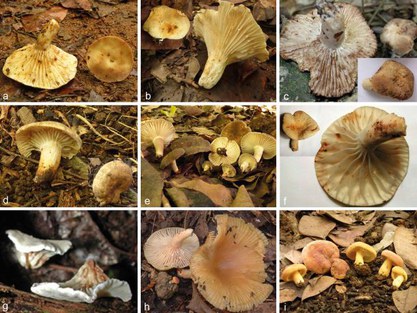Lynn discovered a huge Lactifluus diversity in Central America and the Caribbean
November 2020
Species of the ectomycorrhizal genus Lactifluus, and often entire sections, are typically unique to a single continent. Given these biogeographic patterns, an interesting region to study their diversity is Central America and the Caribbean, since the region is closely connected to and often considered a part of the North American continent, but biogeographically belong to the Neotropical realm, and comprises several regions with different geologic histories. Based on a multi-gene phylogeny and morphological study, this study shows that Central America, Mexico and the Caribbean harbour at least 35 Lactifluus species, of which 33 were never reported outside of this region. It was found that species from the Caribbean generally show affinities to South American taxa, while species from the Central American mainland generally show affinities to Northern hemispheric taxa. We hypothesise that host specificity and/or climate play a crucial role in these different origins of diversity. Because of these different affinities, Caribbean islands harbour a completely different Lactifluus diversity than the Central American mainland. The majority of species occurring on the islands can be considered endemic to certain islands or island groups. In this paper, detailed morphological descriptions are given, with a focus on the unique diversity of the islands, and identification keys to all hitherto described Lactifluus species occurring in Central America and the Caribbean are provided. One new section, Lactifluus sect. Nebulosi, and three new species, Lactifluus guadeloupensis, Lactifluus lepus and Lactifluus marmoratus are described.
Link to the paper : https://www.ingentaconnect.com/content/nhn/pimj/2020/00000044/00000001/a...
